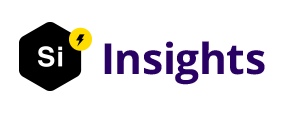Online marketing has opened up the world to everyone. If you think you will never beat your competitors because your business came from a small place, now you don’t have to worry because you can put your advertisement through online marketing. You can pay per click advertising (PPC) and digital marketing tools to market your business.
With over 4 billion people in the world connected to the internet daily and nearly 2 billion buying something online each year, a well-targeted PPC campaign is the difference between sinking and swimming. Add in the fact that there are 5 billion searches on Google every day, and you’ll understand how big a deal PPC is.
But in any bustling marketplace, there are always more than a few rats. In the online marketplace, click fraud is one of the most damaging and thriving practices. This practice works by targeting your PPC campaigns, causing you to lose money, miss out on valuable sales opportunities, and even, potentially, ruin your business.
There is a whole industry that has been built up to defraud internet advertisers and users. Some mischievous, such as hackers; some built to benefit another party fraudulently, others genuinely vindictive and steal advertising away from certain channels.
In fact, the issue of click farms is widely reported, with many of them selling their services to inflate likes and followers on social media. But this same technique can also be used for criminal gain, with millions of dollars at stake for enterprising gangs who know how to make click fraud pay using complex technological solutions and malware.
Why Should You Protect Your Advertisement?
1. Click Fraud Is Getting Hit Everyday
Click Fraud continues to grow every day. In fact, a study by the University of Baltimore puts the loss to marketers from click fraud at $27.3 billion in 2020. Because the potential for profits is huge, even for a small-scale click fraud operation, even relatively simple click fraud, bots can make their developers a tidy income.
2. Big Company Takes Fraud Seriously
Many corporations noticed—the rise of click fraud. Unilever and P&G are two giants who have made efforts to minimize and eliminate their exposure to ad fraud with some success. Increasingly, these bigger businesses are finding ways to mitigate or protect against ad fraud.
3. Bots are Harder to Spot
We can’t know if it’s true that the potential customer clicks our ads or just bots. As the technology behind these bots improves, it becomes harder for your Google algorithms to spot the bot's activity, meaning less chance of the PPC ad networks protecting you from click fraud.
4. Click Fraud Could Attack Social Media
Promotion using social media has become popular these days. Good advertisement could attract potential customers to see our product. As advertising on social media networks becomes increasingly popular, these platforms become more attractive to ad fraud. Click Fraud could attack social media, so many people visit our social media network, yet it is just a click fraud.
5. Not Every Business Crash Because of COVID-19
When almost every economic sector is flowing down, but medical technology and e-commerce companies have some potential to get stronger. So the company should consider using anti-click software to protect their ad in the middle of this crisis.
What is ClickCease™?
ClickCease™ is a click-fraud detection, prevention, and protection service software. An anti-click fraud service to protects customers who use Google Adwords and Bing. ClickCease™ blocks fraudulent IPs automatically and is not affiliated with any search engine as an independent provider.
What is Click Fraud?
We often hear talk of Click Fraud and how businesses can potentially lose substantial sums of money through bad actors repeatedly clicking to use up their daily PPC budget. Click fraud is when your competitor, or a click farm, or bot click on your ads with the malicious intent of draining your advertising budget. Once your advertising budget is drained for the day, your ads will no longer show up, and this is a method competitors use to steal business. But how big is this problem, and is it possible to monitor or fight back?
For example, one of our customers advertised the products. Every day his advertising budget was being drained. Because of that issue, he decided to use ClickCease™, automatically blocking fraudulent IP. It turned out that his competitor was clicking on his ads repeatedly, which is a common problem for many of our customers. After implementing ClickCease™ into his advertisement account, he saw his business grow right before his eyes in a matter of days. Keywords are costly these days, so the cost per click can really take a toll on your ROI. That’s why it’s more important than ever to protect your ads.
What is the sign of Click Fraud?
1. Number of Click Activity
You can tell your site is being a fraud by checking the suspicious activity. This suspicious click activity may also be over a short space of time or at an unusual time of day. It could be self-evident if you haven’t done anything to your ad for a while. If you’ve not updated anything on your site, wouldn’t it be suspicious if there is big traffic on your site? But you have to consider this thing; anything above twice as much traffic might look a bit fishy. But there can be other reasons why your traffic might spike. For example, if your product or service is suddenly in the public eye, or perhaps you’re running an awareness campaign elsewhere.
2. Duplicate IP Addresses
Seeing lots of duplicate IP addresses was an obvious way to spot if you’d been a victim of click fraud. And, of course, seeing lots of the same IP addresses on your log is definitely a red flag when it comes to spotting click fraud or ad fraud. Modern ad fraud techniques are a little more sophisticated than just using the same computer to click on an ad multiple times. Using VPNs, browser or device hijacking and virtual IP addresses means that even if your ad has been clicked fraudulently, it may not be evident from the IP. Yes, this is something to watch out for but isn’t necessarily the first thing you’ll spot. In fact, you can see multiple clicks from the same IP address for genuine reasons, such as shared or public networks.
3. Strange Locations
Strange locations might be a sign of click fraud on your ad. If you never sell anything in some countries, but why so many clicks from that place? Yes, everyone can see our ad because this is a global marketplace, but many clicks from distant places are suspicious.
4. High Clicks / Low conversions
Most people use advertisement sites for advertising their products. But in some cases, advertisers have noticed that their advertising budget(s) have been drained, but there has been no increase in conversions, sales, calls, or anything. Later they know that some competitors clicked on their ads repeatedly to drain the advertising budget, and when the advertising budget is drained for the day, the ads will no longer show up. That’s why there has been no increase in sales or calls from the customers because no one sees the advertisement. Moreover, there are other signs that your site is being a fraud.
What Is The Reason For Doing Click Fraud?
1. Beat Competitors
Competitors often do the click fraud who keep clicking until the ad budget you have set is reached. At that point, potential leads (customers) will no longer show your ad, and your competitor’s ad will move up the search page if it was under yours. Let’s look at an example in Australia in the waste disposal industry. While tracking their clicks, a company realized they quickly reached their Google Ads budget without additional business calls. When they began using ClickCease™, they learned many of the clicks were from the same devices.
After contacting five of his competitors, the waste disposal manager found they were having similar issues. The six waste disposal companies scheduled a meeting to discuss the problem. All showed up at the meeting but one. This naturally raised eyebrows, particularly when the companies’ representatives realized they were all getting an inordinate number of clicks from the same device ID in the same Australian location. The meeting attendees concluded that the fraudulent click source was the competitor who did not show up. They wrote to the suspect competitor with their suspicions and the evidence they had gathered. The fraudulent clicks stopped immediately, and all the companies’ PPC campaign metrics returned to normal.
2. Ad-Hosting Website Owners
Sometimes website owners who host ads in a network such as the Google Ads network are the culprits. Since they receive 68% of the revenue from each click, they have an incentive to artificially increase the number of clicks on ads placed on their sites. This is especially fruitful when they click on high-priced PPC ads, even if they don’t use bots to click hundreds or thousands of times.
3. Customers’ Revenge
There is more than one way for an angry customer to get back at you. They can leave bad reviews on high-profile sites. But competitors can also directly attack your profile and fake their identity as a customer. They can repeatedly click on ads to cost you money. And sometimes, people commit click fraud to cause chaos and harm companies for no clear reason.
How to Prevent Click Fraud?
We can prevent click fraud by following these steps; here it is.
1. Check Every Click
Your competitor will always target your keywords and brand name on the search engine or the advertising site you use. If someone clicks your site in a usual way, we can say it is your potential customer. But if an IP is clicking on your ads over and over again, you know that it needs to be checked. Some suspicious reasons for multiple IP clicks in a short time frame could be:
- An employee / your spouse (maybe even you) is clicking on your ad without noticing that it costs you money.
- A lead is doing massive amounts of research about your service.
- Your client has 1 corporate IP and has multiple buyers searching for you.
2. Click Controlling
Understanding is useless if you can’t do something about this behavior. You have understood what your click threshold is, but how do you actually block. The old way of stopping unwanted lead behavior, AKA: Fraudulent Clicks, was by learning about the bad IPs after the fact and then scurry to add them into the AdWords campaign. This is the old way as advertisers really didn’t save themselves much of their ad spend, if at all, why? When fraud occurs, it can be swift click fraud – 25 clicks within 1 hour, and it can be chronic click fraud, 13 clicks over 3 days. In both ways analyzing the data manually and changing your campaign manually would need you to have a full-time employee just dealing with click fraud. And still, this would be much less preferable than the new way.
3. Use ClickCease™
If the old way of blocking is manual, then naturally, the new method you can use is to use something that can against and prevent Click Fraud. In this case, you can use ClickCease™ as your protection.
How Does ClickCease™ Work?
1. ClickCease™ Has Its Own Algorithm
The ClickCease™ detects every click and collects the information of every click. A partial list of the data the algorithm collects are IP address, country, and city of origin of the clicking IP, user interactions including clicks, scrolls, time on site and mouse movement, clicks frequency, click history, device ID, etc. One of the fraud algorithm's main functions is to check suspicious IP addresses, such as ones from regions you don’t usually get clicks from, using a VPN to mask their location, or ones that have clicked over. ClickCease™ stops competitors and bots from clicking Ads by tracking each click on your search network, display, and shopping campaigns. Taking into account IP and IP range, unique device, VPN, your unique settings, and more. Tracking can be done because each click receives a score on dozens of parameters, and then our click fraud algorithm goes to work.
2. ClickCease™ Takes Immediately Action
If fraud is detected, the algorithm won’t just passively alert you. It will take immediate action by blocks the ads from that IP address in real-time. This means that the ads are no longer visible to the clicker. In the end, each click is given an innocent or fraudulent label. The fraudulent IPs are automatically inputted into your Ad IP exclusion list. Now your competitor/bot will not see your ad. By automatically blocking whoever it is that’s doing the clicking, you’re reducing the number of times they’re able to click on your ads, saving you money immediately.
What Will Happen When We Use ClickCease™?
After using ClickCease™, there will be an increase in conversions, sales, and calls. Now that only real potential customers see your ads, there will be more genuine traffic to your site. They see their advertisement not being drained every day, and if they do, it’s because of a spike in business. If real potential customers see your ad, the chance for increasing sales is higher. Not only that, but also you will save money from the ads because there is no fraud click anymore.





